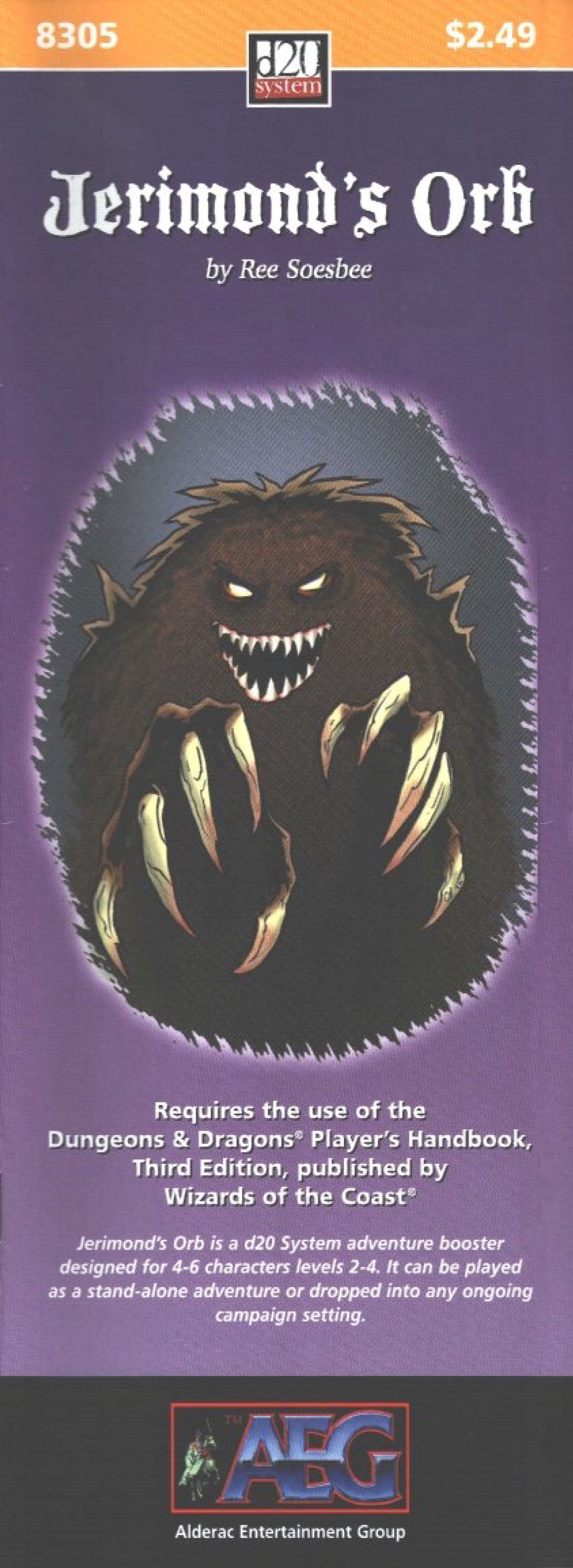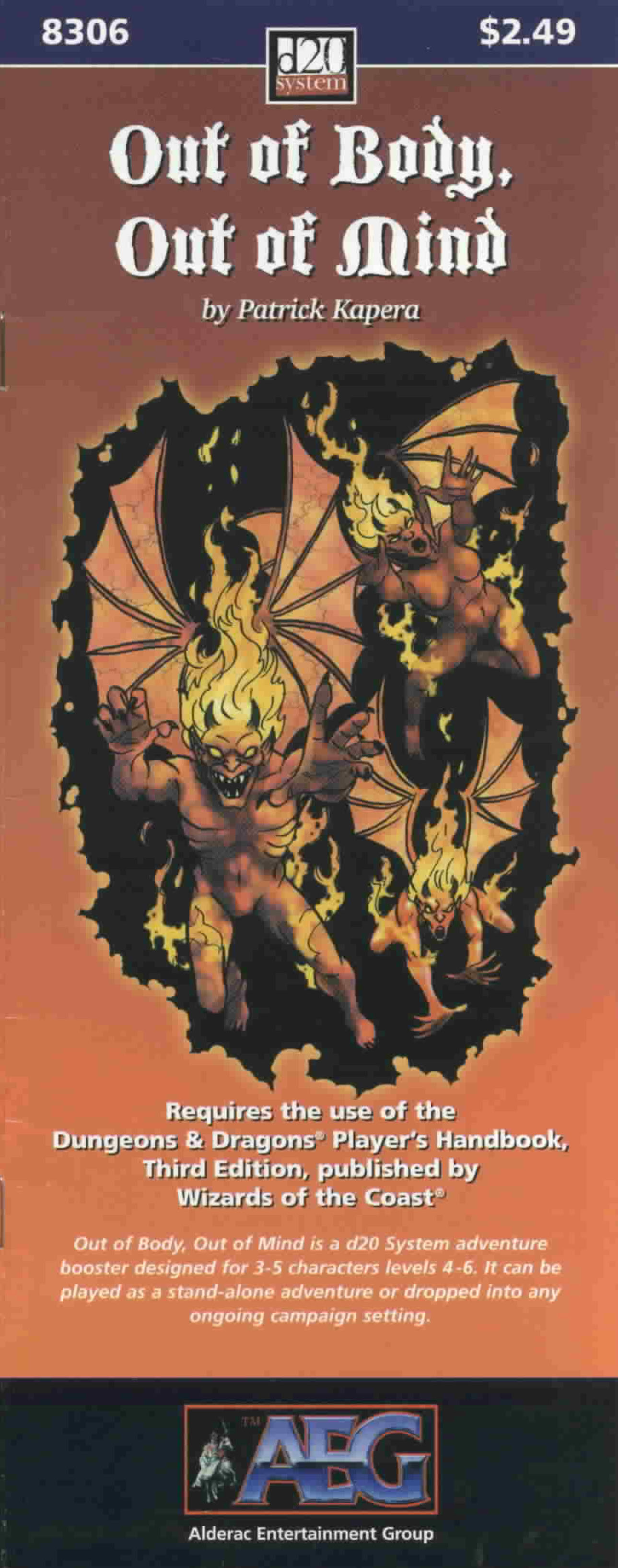From page one, Jerimond’s Orb has problems.
Review Originally Appeared May 21st, 2001
Warning: This review will contain spoilers for Jerimond’s Orb. Players who may find themselves playing in this adventure should not read beyond this point.
I knew I was going to have problems with Jerimond’s Orb right from page one, when I read the following boxed text, which is specifically meant to be read aloud to the players (excerpted):
“My name is Arawn. I remember traveling home to Treefall, to my father’s inn, and then… darkness. […] Please, let me go home to my village. My mother and sister must worry for me. Arawn has no recollection of the encounter with the PCs, the beast he became, or anything that occurred after sunset the evening before.”
Dropping spoilers into the boxed text due to a layout error is a small thing, but it denotes a lack of attention to detail. This opening section of the adventure also betrays another pervasive problem: The assumption that the PCs will do completely illogical things to further the plot. This is one of the worst things a module writer can do, because it practically guarantees that the PCs will take actions which will either derail the adventure (thus rendering the module worthless to the DM) or force the DM to railroad the characters into the proper course of action (thus rendering the module worthless to the players). Specifically, Arawn shows up in the form of a terrible monster – which attempts to attack and kill the PCs. The adventure specifically assumes that the PCs will leave this monster alone and – at the same time – keep him around until morning (when he changes back to his human form).
You know, I’ve played RPGs for more than a decade – and I have never had the PCs in my games leave a homicidal monster alive. (Particularly in D&D, where you really have to go out of your way to capture an opponent alive.)
PLOT
Fifty years ago a wizard named Jerimond left a magical orb to protect his hometown of Treefall. The orb was designed to enhance the natural luck of any creature or area. If the orb is stolen, however, those who it once benefited will fall under a terrible curse: Condemned to turn into beasts (known as mathorn) when the sun sets and remain that way until dawn.
The orb was placed on a statue in the center of town, and has long gifted Treefall with good luck and plentiful harvests. A few days ago, local bandits stole the orb (which Jerimond used as part of a key-and-lock system to secure the treasure stashed at his old house). Now the crops are turning bad and random villagers are turning into vicious monsters.
When the PCs arrive in town, they will quickly have four mysteries to sort out: The missing orb, a dead girl, the plague of monsters, and the local bandits. All four, of course, have their red herrings and true clues – and all four, of course, turn out to be connected to one another.
CONCLUSION
Although Jerimond’s Orb is not without its strengths – most notably the interesting cast of characters that Ree Soesbee introduces – it’s dominated by its weaknesses. Its largest flaw, unfortunately, is the general lack of forethought and planning which Soesbee shows in constructing adventure. Time and again the PCs are asked to do irrational things, make illogical leaps of reasoning, and stumble upon the “correct” course of action.
All the building blocks of a good, solid adventure are here, but they are sadly disarranged and out of sorts. To render Jerimond’s Orb worth playing is an effort which its underlying quality most likely does not justify. There are better things to spend your money on.
Style: 3
Substance: 3
Author: Ree Soesbee
Publisher: Alderac Entertainment Group
Line: Adventure Boosters
Price: $2.49
Product Code: 8305
Pages: 16
Reading this review 20+ years after writing it, I’m left a little confused by ranking of Substance 3. But since I also haven’t revisited this adventure in just as many years, I guess I’ll trust past-Justin’s assessment.
The reprint of this adventure in the Adventure I collection notably corrects the boxed text errors mentioned in this review.
Next AEG Booster Review: Kurishan’s Garden
For an explanation of where these reviews came from and why you can no longer find them at RPGNet, click here.

















